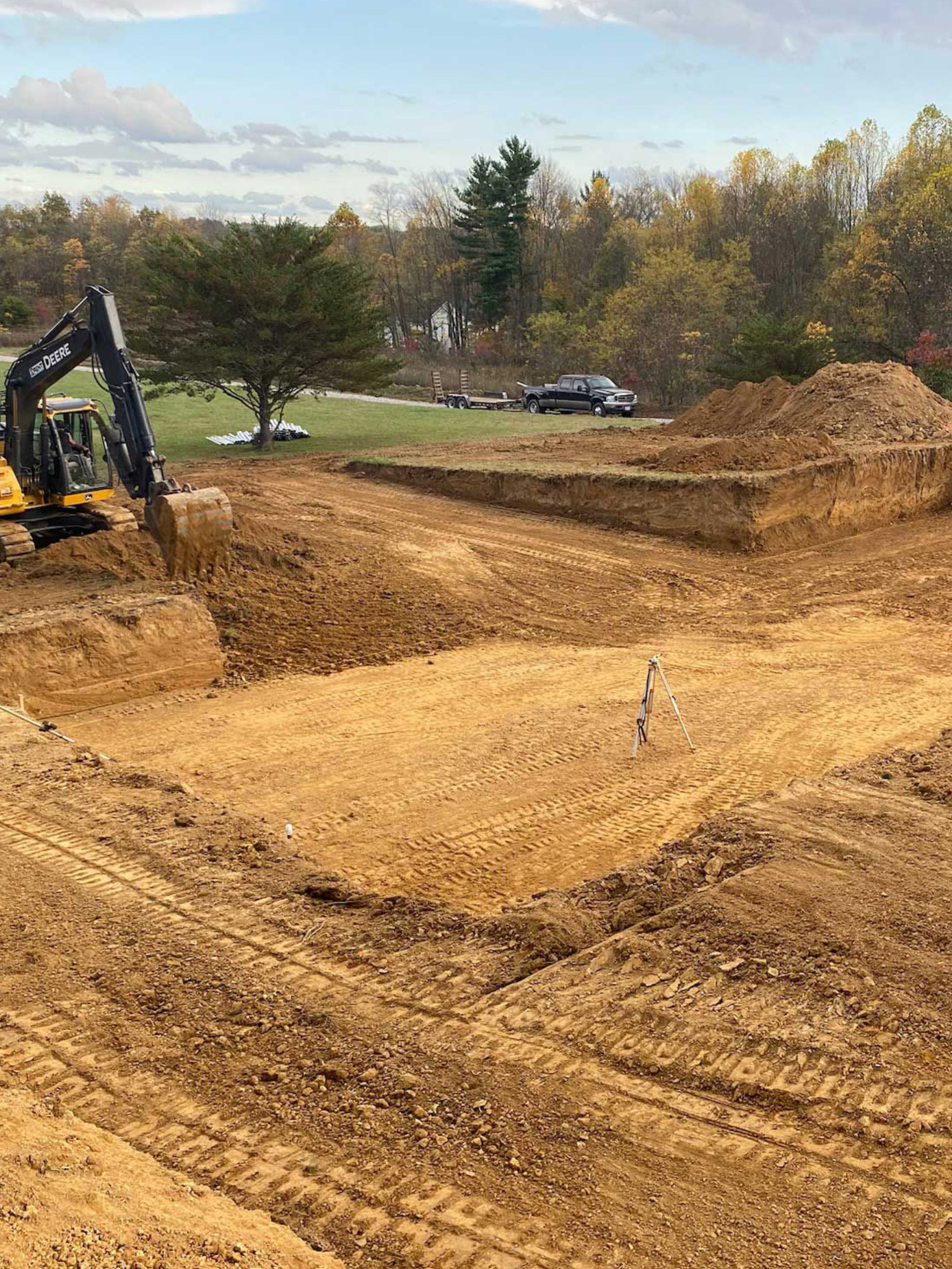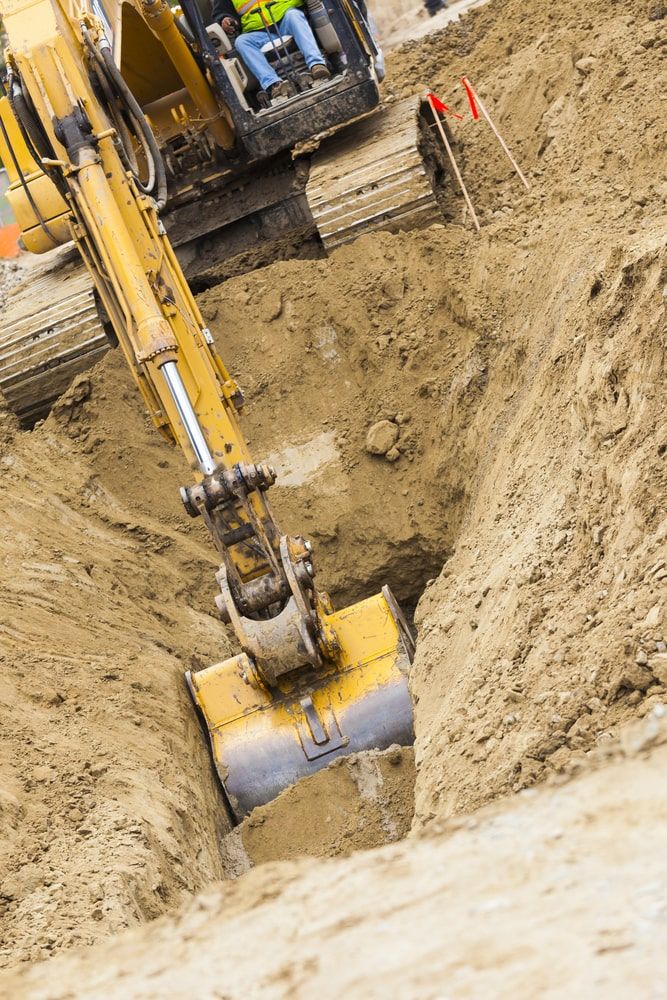Specialist Septic Ohio - Trusted Septic System Professionals in Ohio
Specialist Septic Ohio - Trusted Septic System Professionals in Ohio
Blog Article
Revealing the Art of Excavation: Pro Tips for Safe and Efficient Excavating
As soil is transformed and earth is moved, the details of excavation expose themselves, requiring a keen understanding of devices, dirt composition, safety procedures, and ecological considerations. The proficiency required to browse these elements successfully can suggest the difference between an effective excavation project and a prospective calamity.
Importance of Appropriate Devices
To ensure the safety and effectiveness of any kind of excavation project, utilizing the suitable tools is paramount. The right tools not only improve performance but also alleviate threats linked with digging. Excavation jobs differ in extent and intricacy, ranging from tiny residential landscaping jobs to massive building and construction tasks. Despite the project size, having the correct equipment can make a considerable difference in the result.
These flexible devices come in numerous dimensions to suit various project needs. Tiny excavators are perfect for smaller sized tasks, while bigger excavators deal with more considerable jobs efficiently.
In addition to excavators, other crucial tools includes dump plates, trucks, and excavators. Dispose vehicles are crucial for eliminating and transferring excavated products, while plates are utilized for excavating narrow and deep trenches. Bulldozers master tasks that need pressing large quantities of dirt or debris. By purchasing the ideal equipment, excavation jobs can be finished securely, on schedule, and with accuracy.
Understanding Soil Make-up
A comprehensive grasp of soil structure is essential for performing excavation jobs with precision and safety and security. Recognizing the different sorts of dirt is critical as it directly affects excavation approaches, tools option, and overall project effectiveness. Soil structure normally includes 4 major parts: sand, silt, clay, and raw material. Each component has distinct buildings that influence exactly how soil reacts to excavation processes.
Silt particles are smaller sized than sand yet larger than clay, offering modest water drainage and communication. Organic issue, such as rotting plant material, impacts soil fertility and stability.
Prior to starting excavation, carrying out soil tests to identify its structure and features is necessary. This details assists in choosing the proper devices, carrying out security steps, and developing excavation techniques tailored to the details soil problems - lancaster trenching. By comprehending dirt composition, excavation experts can improve job results while making sure security and adherence to ideal practices
Precaution and Methods
Comprehending dirt structure is the cornerstone whereupon safety procedures and methods for excavation jobs are built, making sure the well-being of employees and the success of the endeavor. When it involves security during excavation, there are several key steps that have to be applied to minimize dangers and stop mishaps.
Most importantly, before any kind of digging starts, a complete evaluation of the site ought to be conducted to determine any prospective dangers such as underground energies, unstable dirt conditions, or nearby structures that could pose a danger. It is important to have a qualified individual manage the excavation procedure to make sure that all safety protocols are followed purely.
Additionally, all employees entailed in the excavation must be correctly learnt risk-free excavating techniques and the proper operation of devices. Personal safety devices (PPE) such as tough hats, high presence clothing, gloves, and safety boots ought to be used in any way times to lessen the threat of injuries. lancaster excavation. Regular safety meetings and toolbox talks should also be conducted to keep all workers informed about potential risks and strengthen risk-free work techniques. By adhering to these safety and security actions and protocols, excavation projects can be completed effectively and without case.
Efficient Excavation Planning
When beginning on an excavation project, careful planning is vital to guarantee performance, security, and successful outcomes. Effective excavation preparation involves numerous essential actions that are crucial for the smooth execution of the task.
Once the site evaluation is complete, the following action is to produce a clear timeline and timetable for the excavation activities. This includes establishing the sequence of tasks, tools requirements, and manpower allowance. Correct scheduling helps prevent hold-ups and ensures that the project remains on track.

Moreover, communication among all staff member is vital throughout the preparation stage. Clear directives, regular updates, and efficient coordination are essential for an effective excavation project. By investing effort and time in thorough preparation, excavation groups can substantially improve efficiency, lessen dangers, and achieve effective end results.

Managing Ecological Considerations
With increasing focus on environmental sustainability in building and construction practices, taking care of environmental factors to consider has become an essential element of excavation tasks. Excavation activities have the possible to affect the surrounding setting with soil erosion, debris overflow, environment interruption, and contamination of water resources. To alleviate these risks, it is crucial to carry out best techniques that prioritize ecological defense.

Moreover, appropriate waste administration is important to avoid soil and water contamination. dump truck companies in ohio Executing procedures for the disposal of hazardous products, recycling of waste products, and minimizing using damaging chemicals can substantially minimize the ecological influence of excavation jobs. By incorporating these methods into excavation planning and implementation, building and construction firms can make sure that their jobs are not only safe and effective however likewise ecologically responsible.
Verdict
Finally, grasping the art of excavation requires a thorough understanding of correct devices, soil structure, precaution, and effective planning. By following these standards and thinking about environmental variables, excavations can be conducted safely and effectively. It is crucial to focus on safety and performance in every digging task to guarantee effective outcomes.
As dirt is turned and planet is moved, the ins and outs of excavation reveal themselves, demanding an eager understanding of equipment, dirt composition, security protocols, and environmental factors to consider.To guarantee the safety and security and efficiency of any type of excavation task, using the ideal equipment is extremely important.An extensive understanding of dirt composition is essential for executing excavation jobs with accuracy and safety and security. Comprehending the various kinds of soil is important as it straight impacts excavation methods, devices option, and overall job performance. By understanding dirt make-up, excavation professionals can enhance job end results while ensuring security and adherence to ideal practices.
Report this page